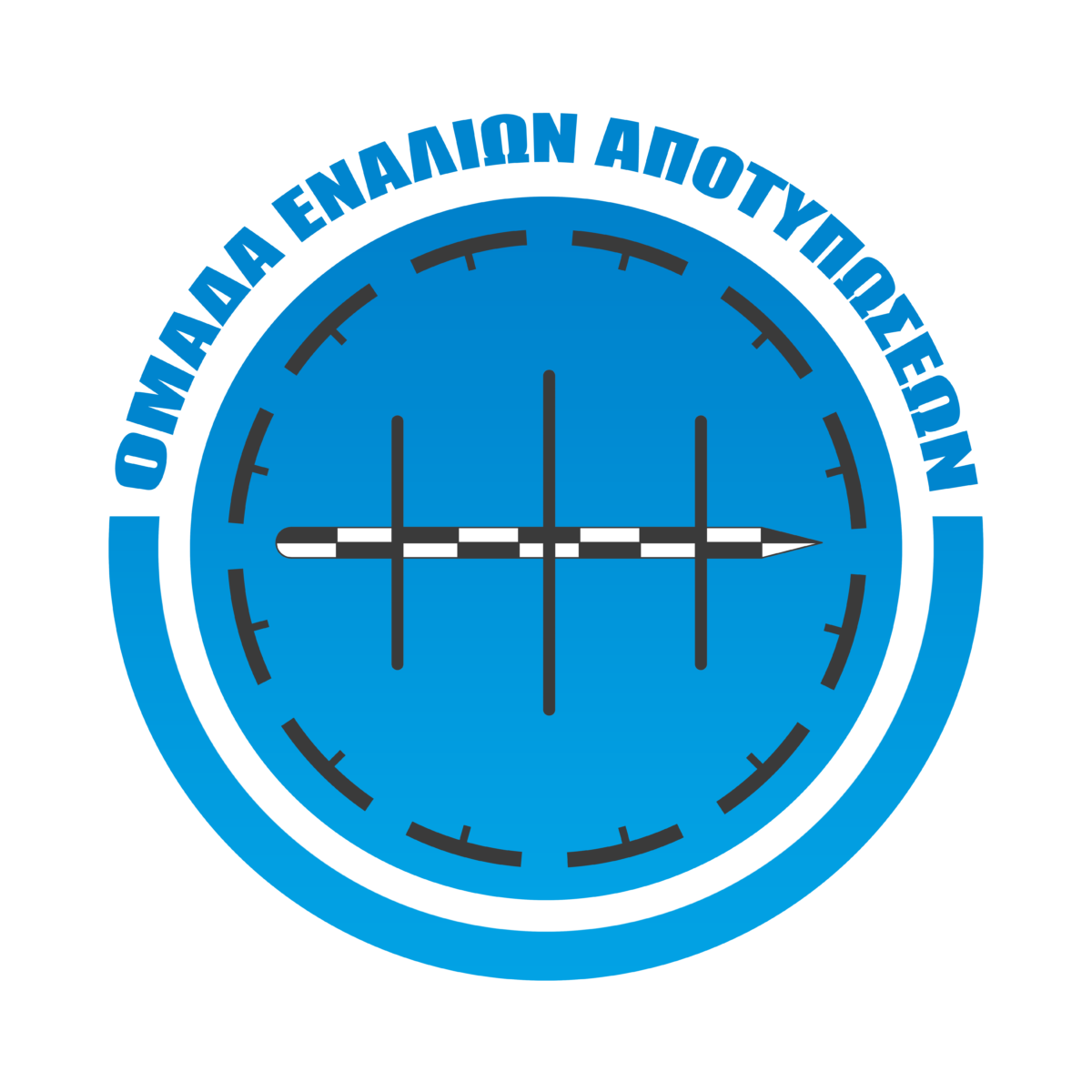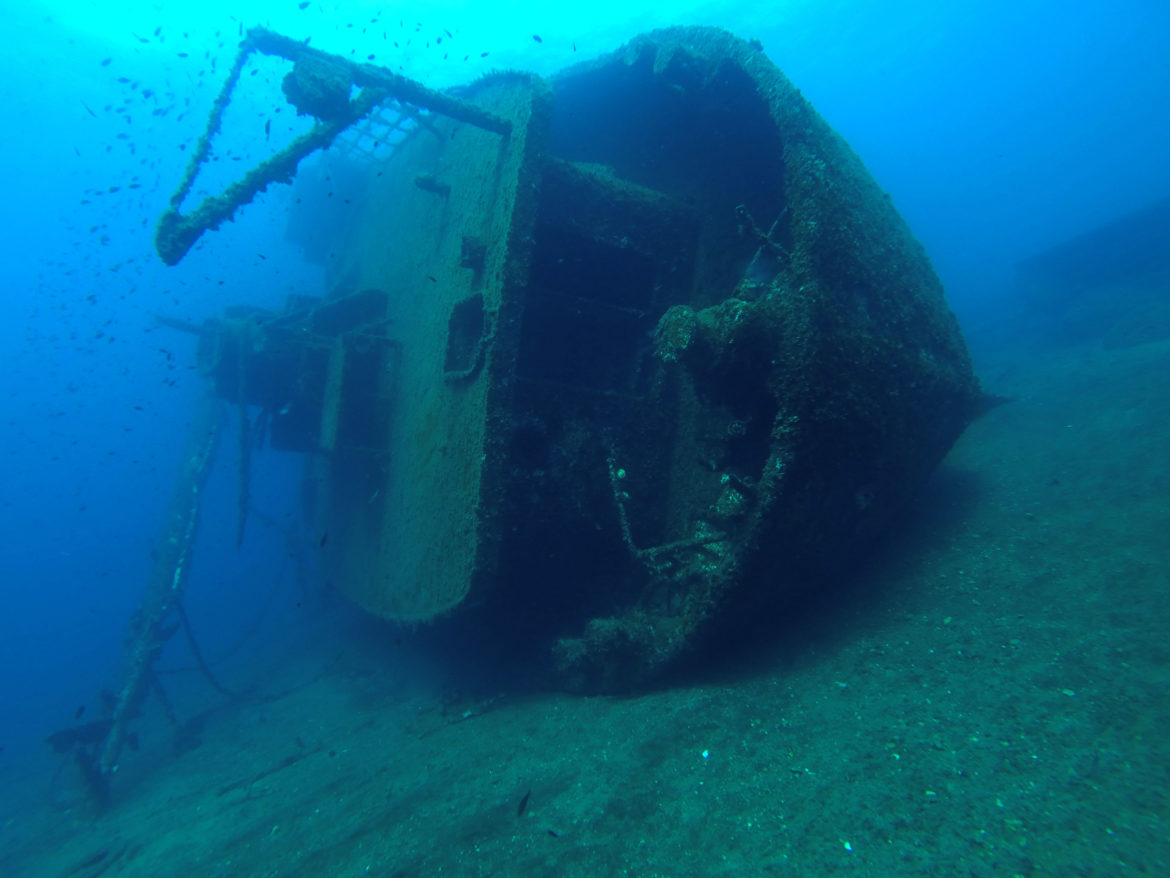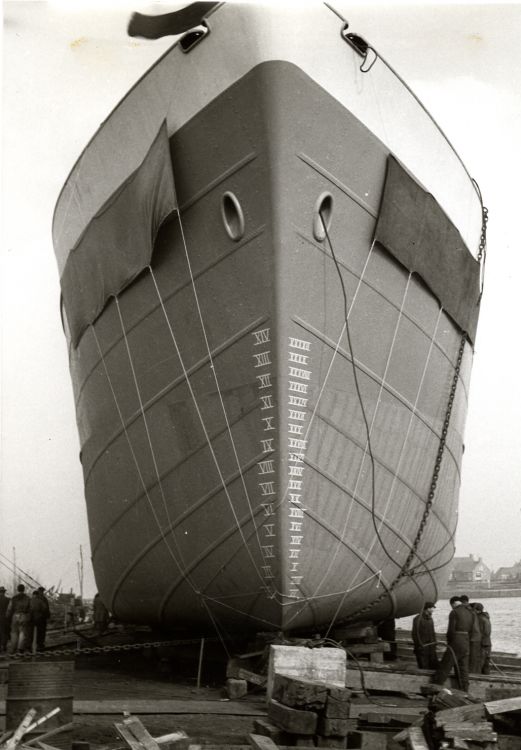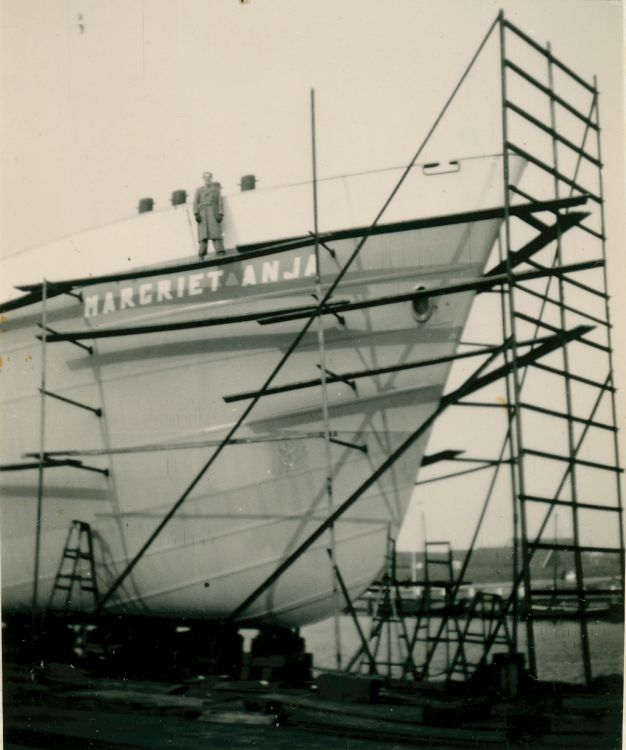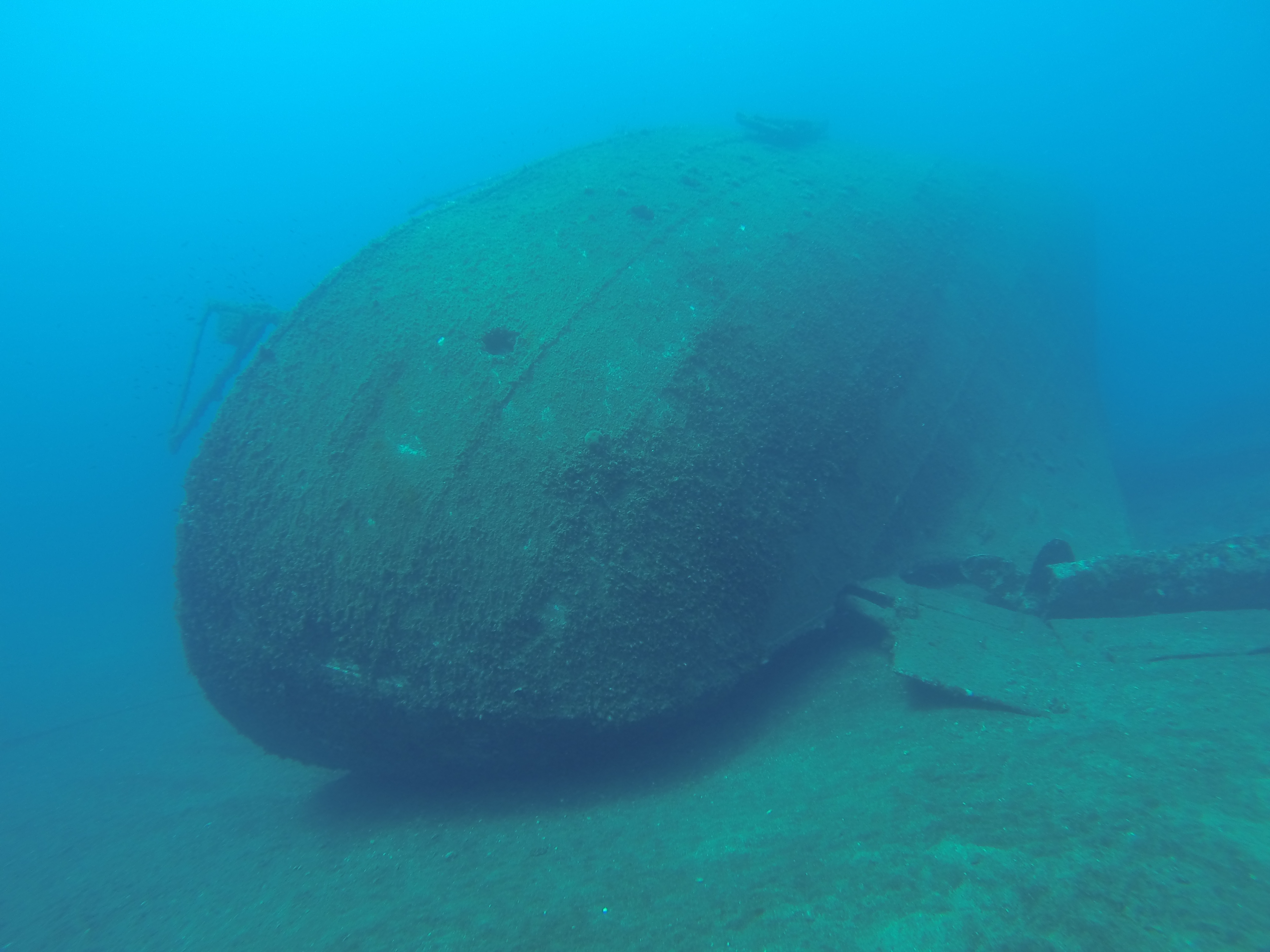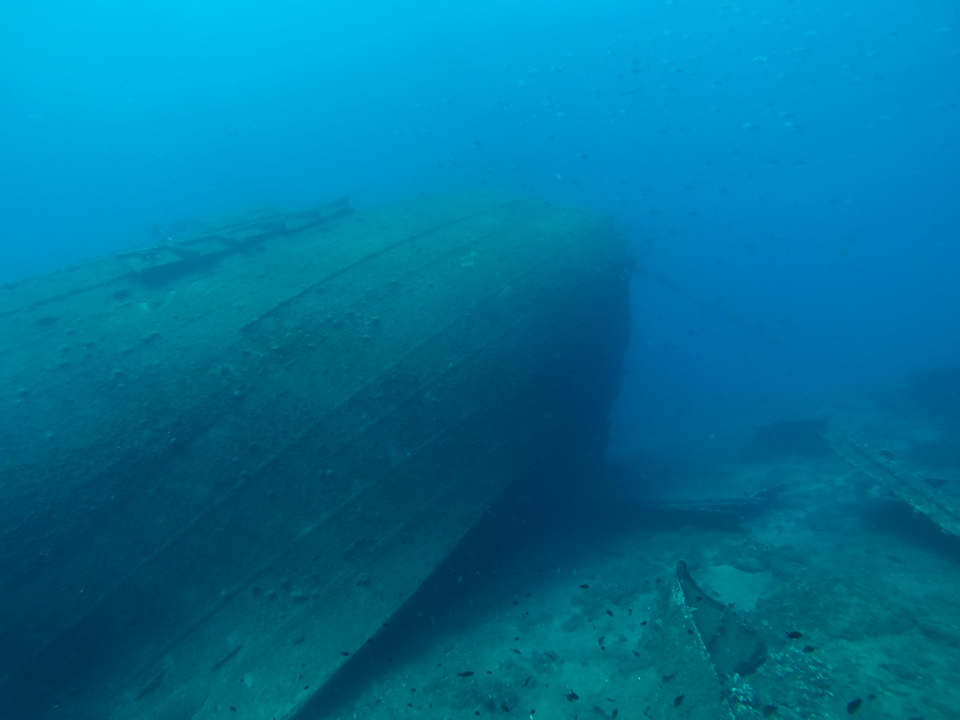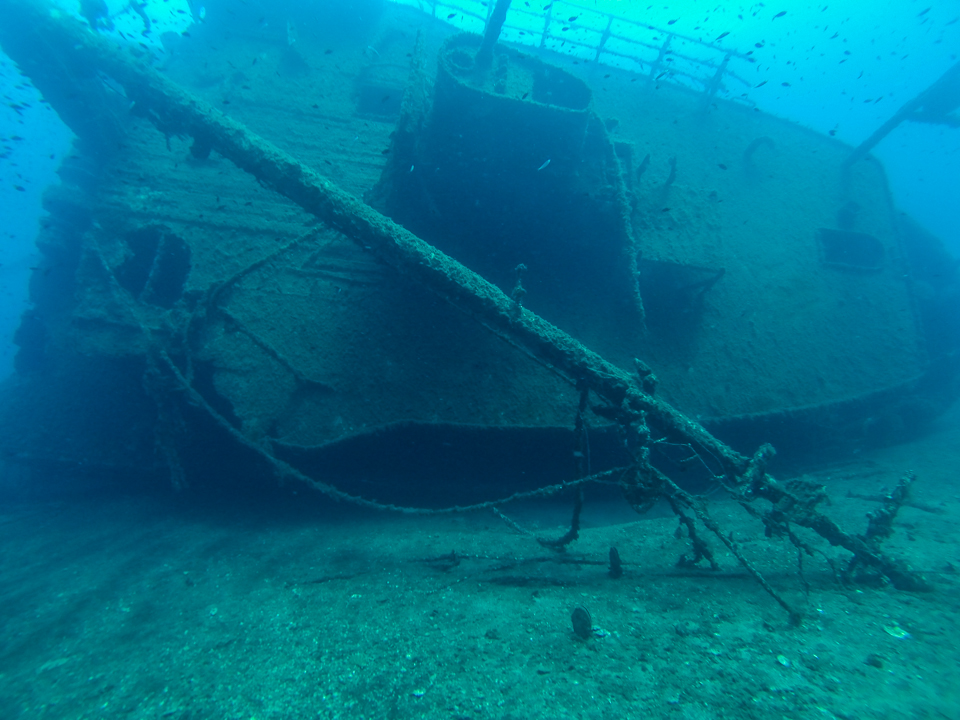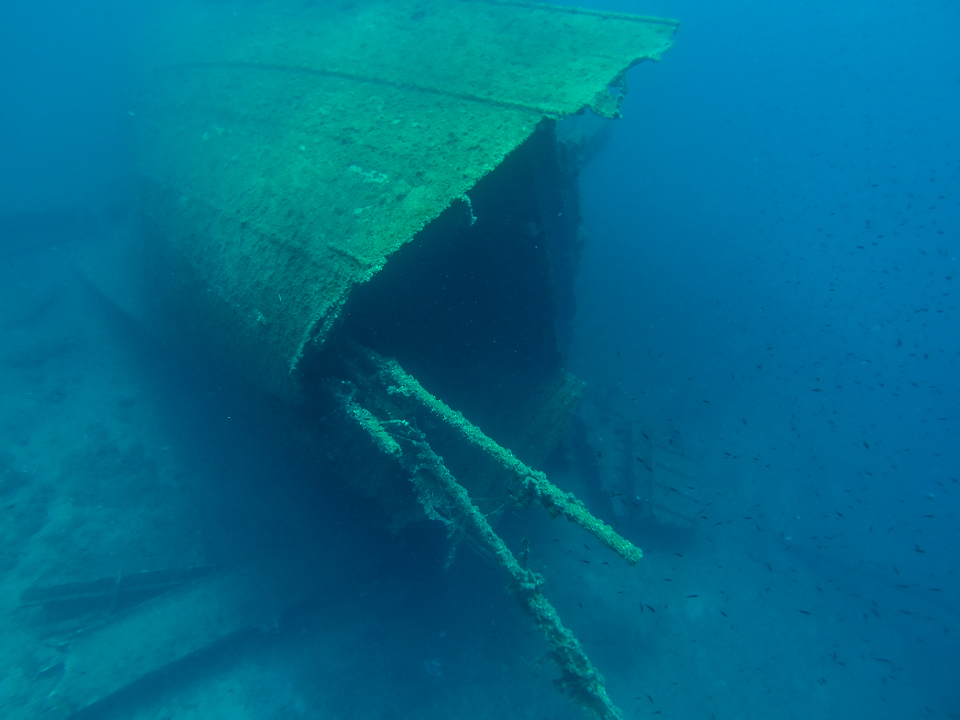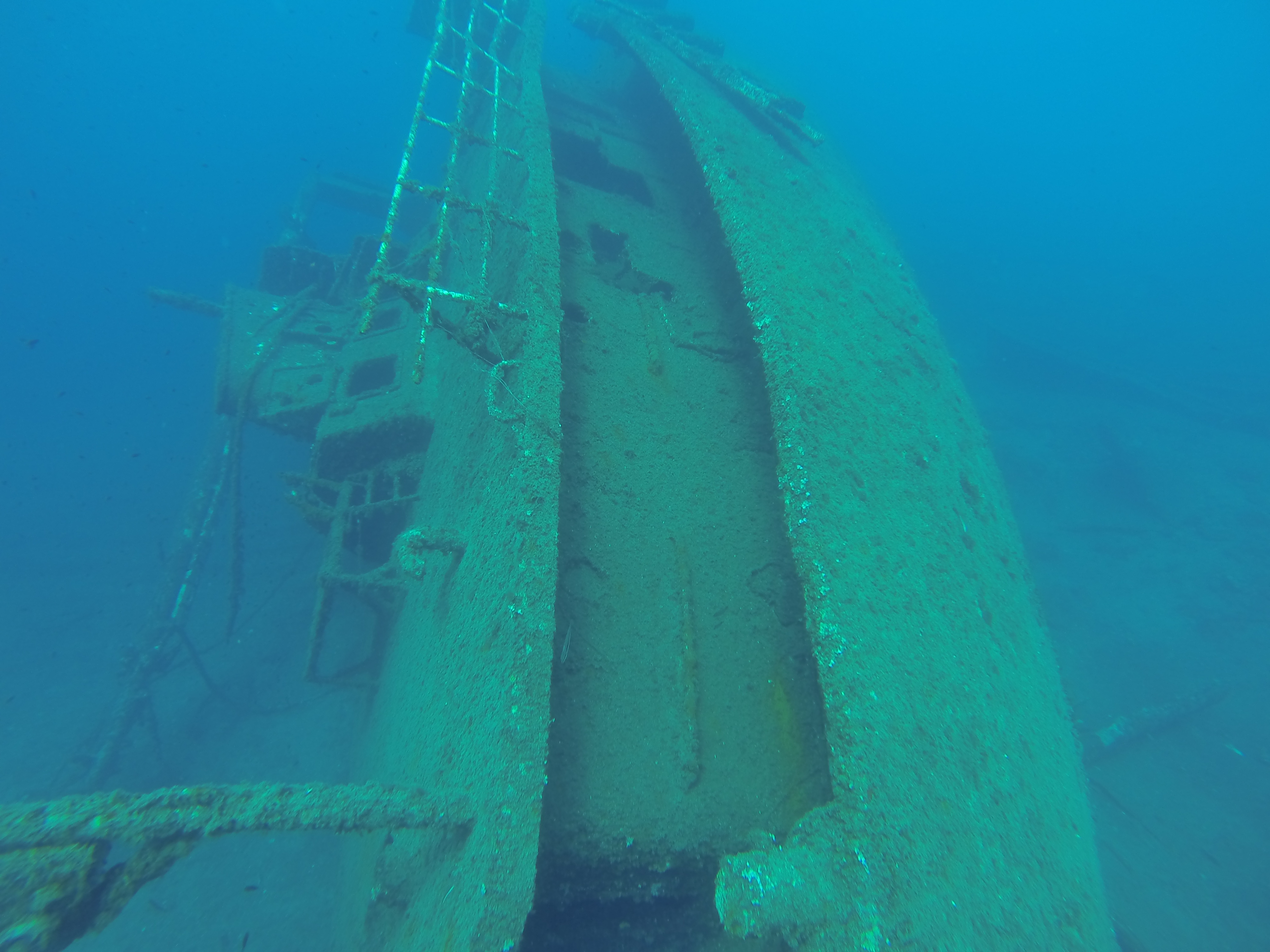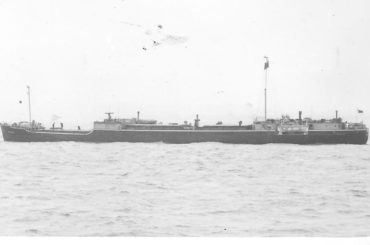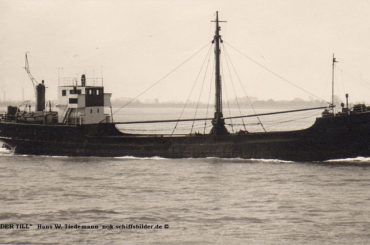In 480 BC, a fleet assembled by Persian King Xerxes headed south on a revengeful second attempt at conquest of the Greek mainland. However, in the strait between Skiathos and Pelion, at least three invading ships were dashed on a mostly submerged reef known then as Myrmix. Xerxes ordered the construction of a beacon [1] to mark the dangerous obstacle and avoid further loss. At the beginning of the 20th century, due to the coastal traffic on the Thessaloniki-Volos-Piraeus route, a manned lighthouse was built in Pontikonisi, located on the edge of North Evia. It emitted three beams, one showing the safe route, the others warning mariners of the dangers threatened by Elena Reef off Skaithos and Lefteris Reef (former Myrmix Reef) in the middle of the straight to the south. Although the existence of the modern lighthouse did not completely solve the problem, it was an improvement.

Map of the area of Lefteris Reef. From this orientation, the coasts of Pelion can be seen in the west (left) and the island of Skiathos in the east (right). Safe passage between Elena Reef and the Pelion coast is a mere 2,000 metres, while further south Lefteris Reef with its lighthouse remains a serious obstacle in the middle of the strait.
source: https://webapp.navionics.com/
In 1915, an allied convoy transporting troops to Thessaloniki came close to being wrecked because Pontikonisi lighthouse had been damaged. Later, a French warship ran aground on Lefteris Reef. This was later followed by French cargo ship, which remained grounded on the reef for many years.
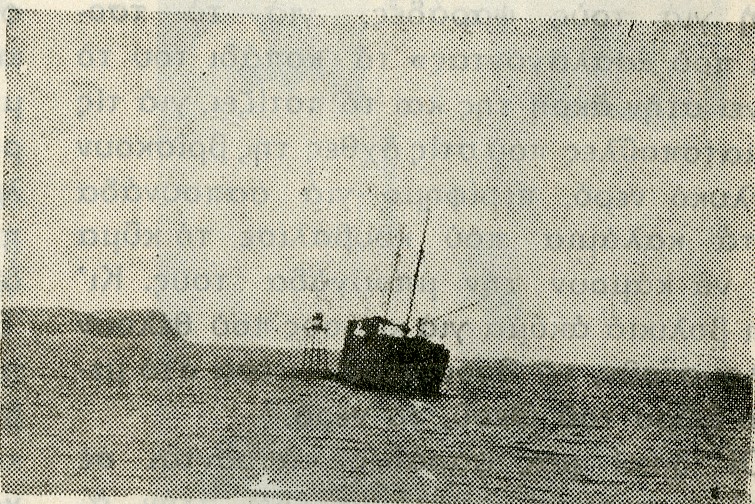
A French cargo ship stuck on Lefteris Reef.
Photo by Lieutenant Kazakos
AGA lighthouses
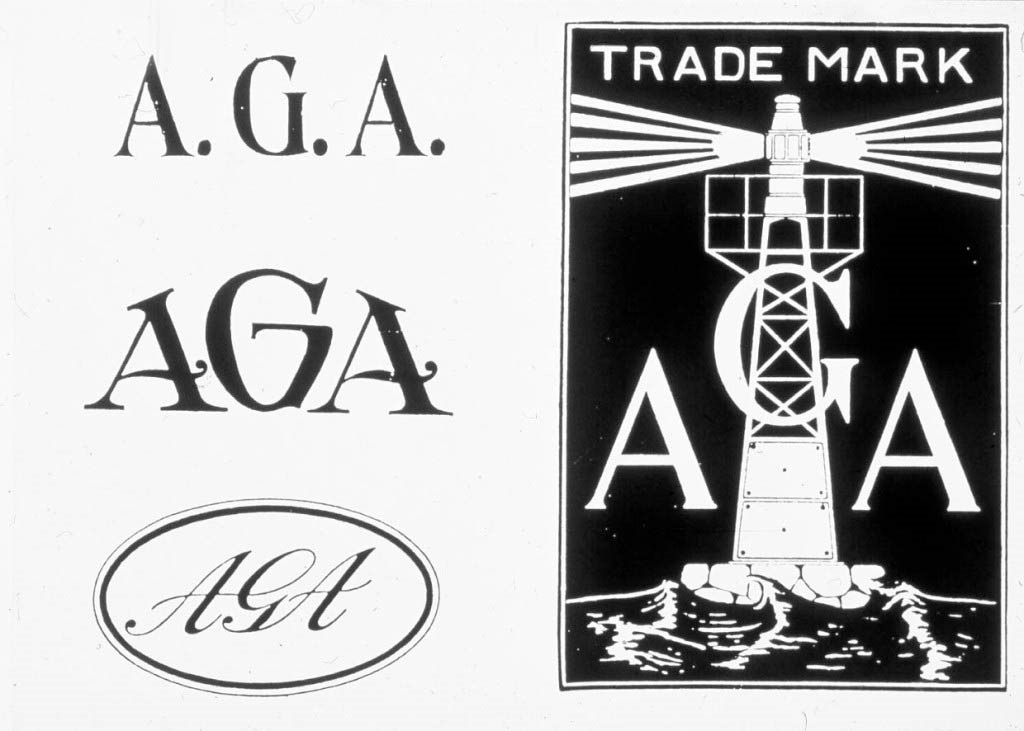
source: https://sv.wikipedia.org/wiki/Aga_(f%C3%B6retag)#/media/Fil:AGA_logotype_old.jpg
Until the beginning of the 20th century, the problem with lighthouses, particularly those in remote, inaccessible locations, was one of supplying them with fuel. It was to be solved by Gustaf Dalén, a Swedish engineer and industrialist who invented the AGA automatic lighthouse, popularly referred to as the ‘Dalén light’. Three of his innovations made autonomous lighthouses possible.
The first concerned transportation and storage. Acetylene burns exceptionally brightly, but is highly inflammable and unstable. After experimentation, Dalén found that if acetylene is stored with acetone and an absorbent material he developed himself, then it can be transported safely. The material included asbestos, cement and carbon and was given the trade name Agamassan (AGA).

A cross section of an acetylene bottle filled with Agamassan(AGA).
source: https://www.cyberphoto.se/captains-log/svenska-uppfinningar
Now that acetylene could be transported safely, the next step was to develop a device which would conserve its use so that the lighthouses would need minimal refueling. He invented a valve which only opened when refueling was necessary and saved up to 90% on fuel, thereby considerably extending lighthouse service.
The AGA valvein operation.
The third device invented by Dalén was a solar valve that shut off the fuel supply during the day, thereby saving on fuel. Although blinded in an acetylene explosion in 1912, he became a Nobel Laureate in the same year, receiving a Nobel Prize in Physics for his potentially life-saving innovations.
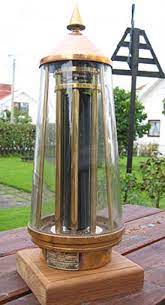
TheDalén solar valve. The black cylinder in the middle of the device extends with daylight temperatures, thus closing the fuel supply value and turning off the light. The temperature drop after sunset contracts the cylinder, thereby opening the fuel supply value and turning on the light.
Lefteris Reef
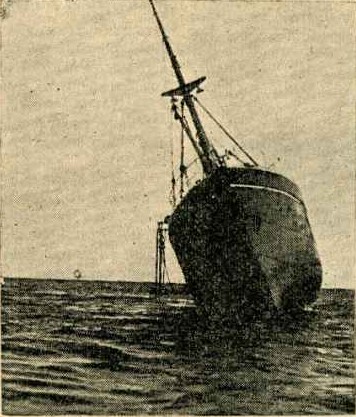
An unidentified allied ship stranded on the reef. It has been called Lefteris Reef since the 19th century. Renowned Greek poet, Alexandros Papadiamantis describes it as: “Freeing the ships of their cargo, and freeing sailors from the burdens of life.”source: Ναυτική Ελλάς
After the First World War, the lighthouse service, headed by Stylianos Lykoudis, began the construction of wireframe structure on the Lefteris Reef. The intention was to install an automatic AGA lighthouse. However, during foundation work, carved boulders were discovered on the reef bed.
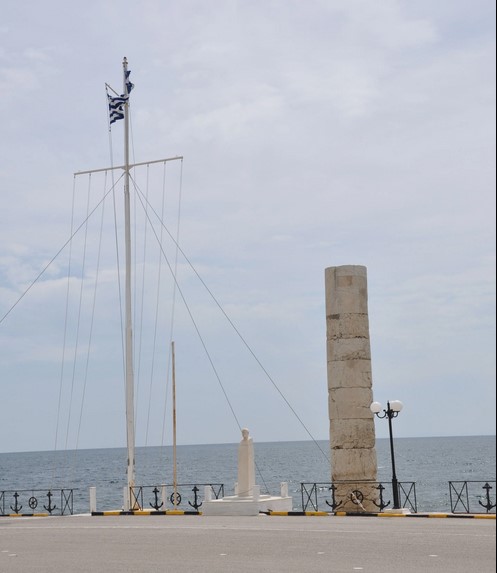
Xerxes’ beacon as it is today, to be found in the Navy Testing School in Piraeus. It has been reconstructed using original and substitute masonry.
source: https://e-thessalia.gr/sti-skiatho-to-aleorio-toy-xerxi-thetiki-i-naytiki-dioikisi-aigaioy-gia-metafora-toy-sto-nisi/
After searching the records, Lykoudis found a single reference to Xerxes’ beacon in writings by Herodotus. These boulders, eight in number, were raised from the reef and are now at the Navy Testing School in Piraeus.
The difficulty and danger of navigating the narrow passage of Skaithos Strait can be understood from the fact that the accidents continued, even after the installation of the lighthouse on the reef.
S.S. VOLOS
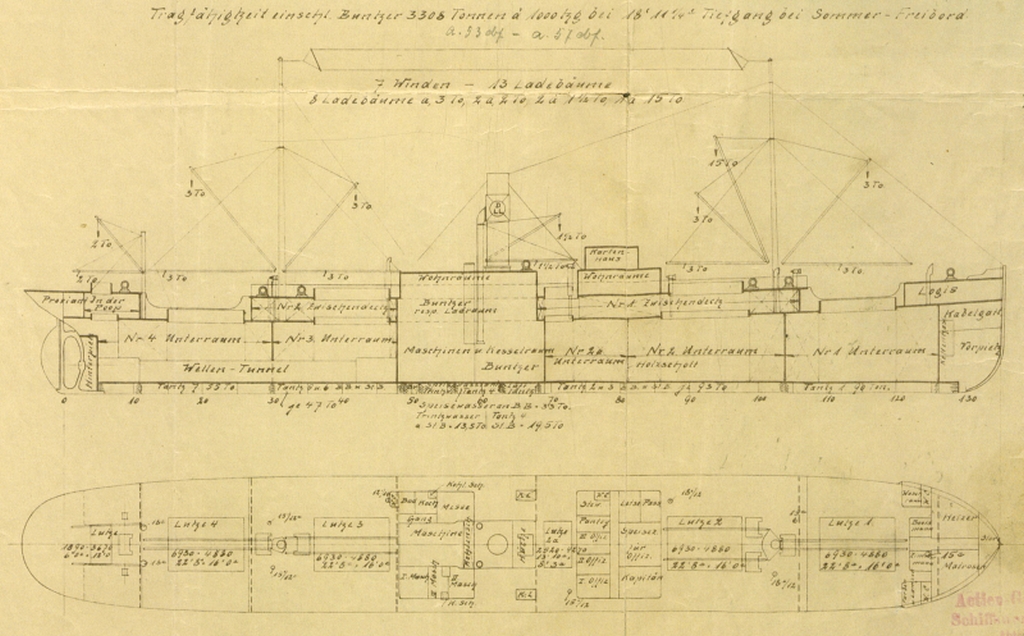
Diagram of the S.S. VOLOS
Reserch ROSS ROBERTSON
On February 21, 1931 the German HAPAG cargo steamer VOLOS departed from the Port of Volos for Thessaloniki, despite the worsening weather. By the time the ship left the Pagasitikos Gulf, conditions had become so bad that the ship had been pushed by wave and dragged by current towards Lefteris Reef without the Captain or his crew noticing it until it was too late. Thus, the VOLOS ran aground on the Lefteris reef. There was no loss of life and although attempts to purge the ship from the reef failed, some of the cargo was recovered before the ship was abandoned to its fate.
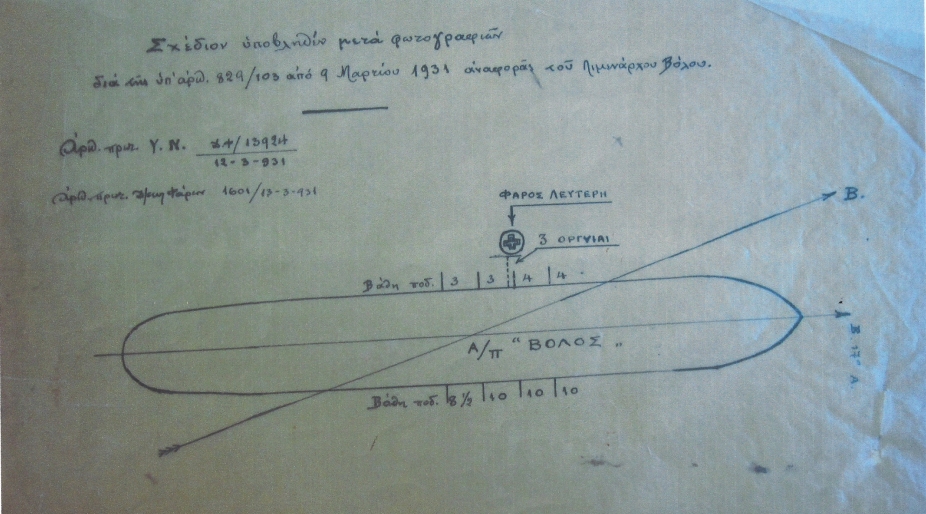
Sketch of the S.S. VOLOS with its location near the lighthouse
Research Grigoris Kartapanis
The stranded ship greatly partially obstructed lighthouse, causing a danger to navigation. Locals began scavenging the wreck for useful materials and in May 1931, a fire broke out which incinerated the interior. As the ship was lightened, it was moved by wave and tide even closer to the lighthouse, threatening its structural integrity. On January 20, 1934 the lighthouse lamp was mounted on the bow railing of the VOLOS, where it remained for a year. In February 1932, the VOLOS was cut in half and the stern sank to the bottom. The bow and foredeck remained on the reef, with the lighthouse towering above it.
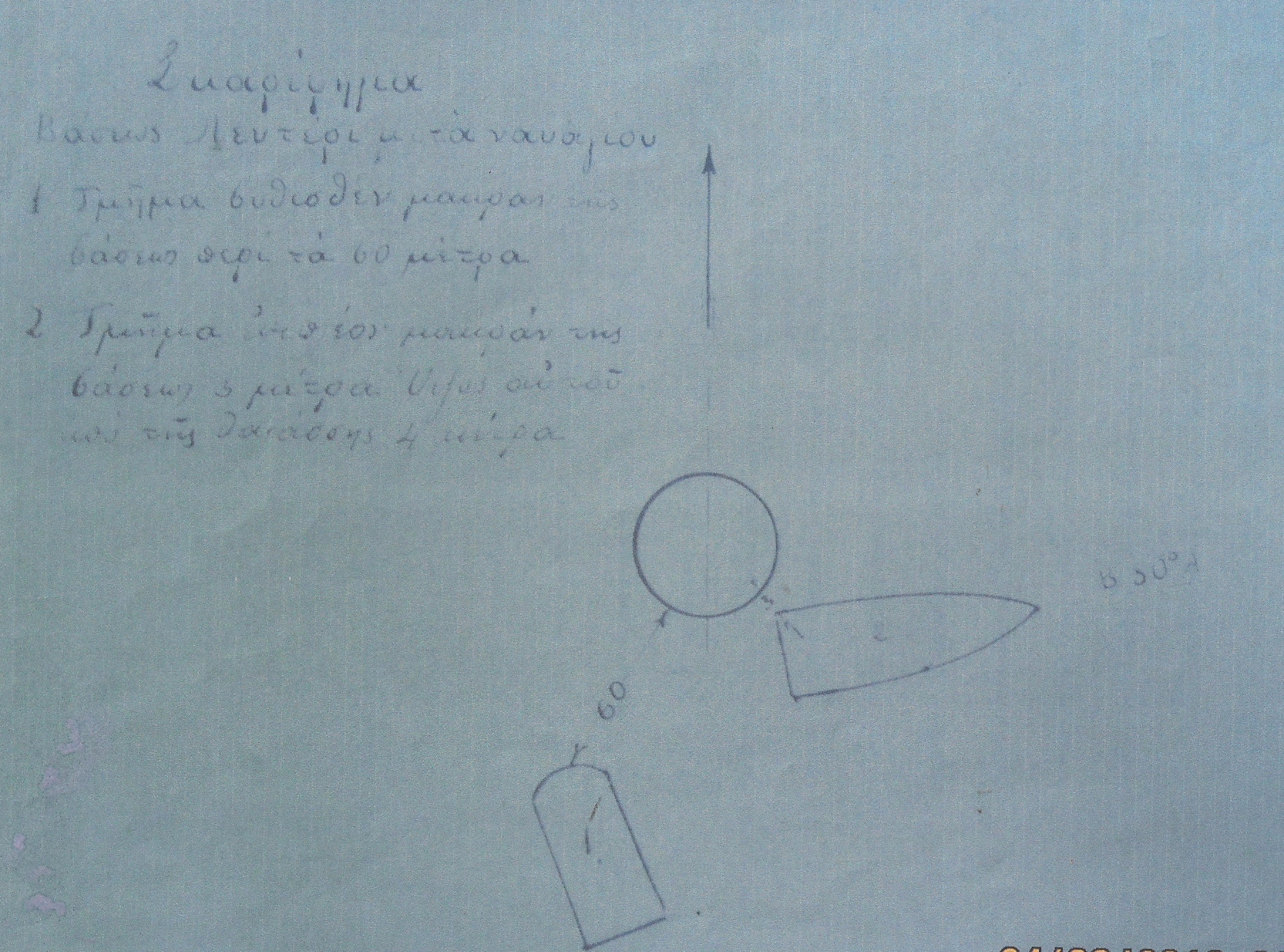
Sketch of the S.S. VOLOS with its location near the lighthouse
Research by Grigoris Kartapanis
Finally, after an on-site inspection, the structural integrity of the foundation was confirmed and it was decided to move the lighthouse lamp back to its original location on the wireframe, restoring its full operation in November 1935.
MARGRIET ANJA
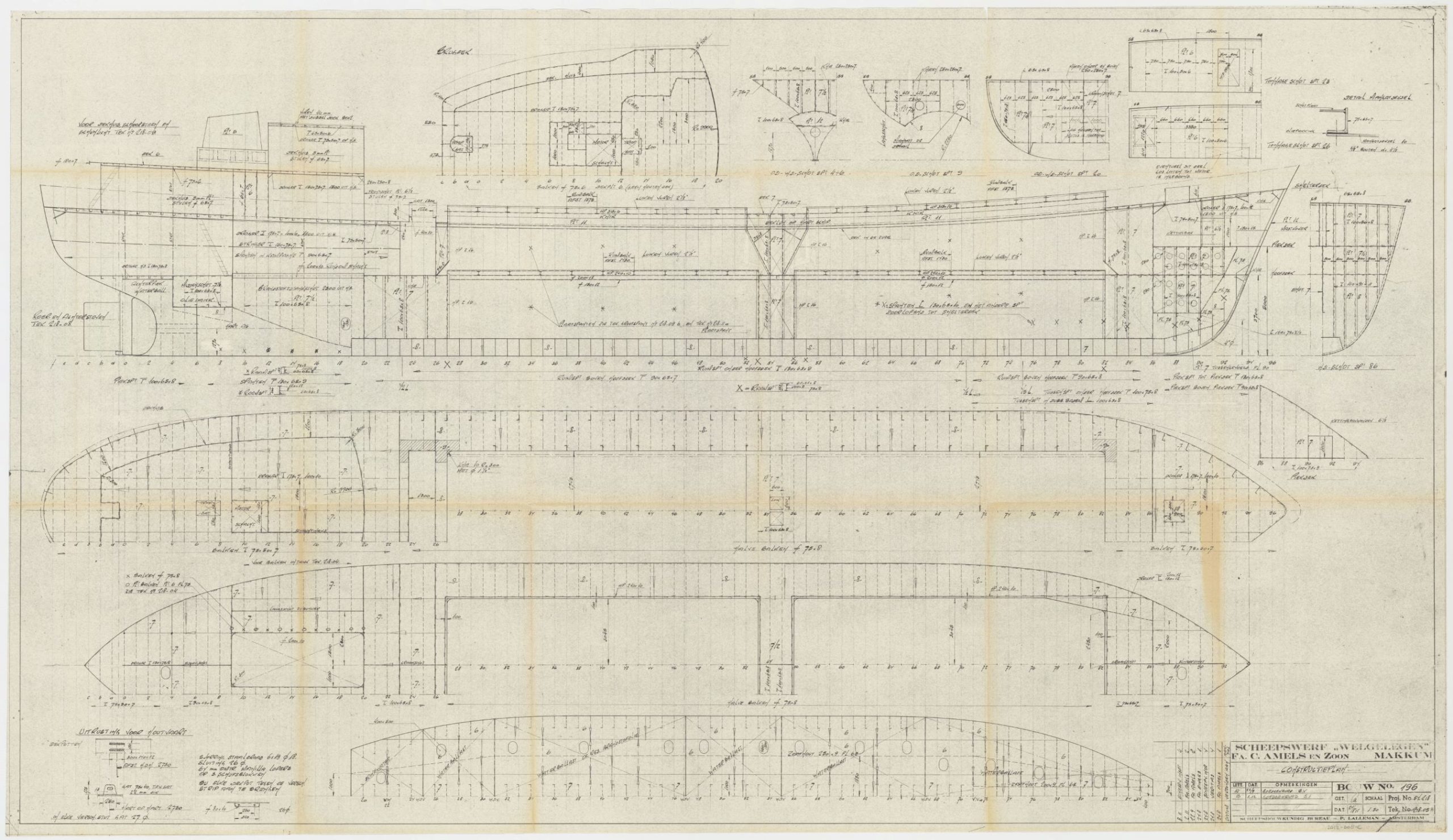
Diagram of theMARGRIET ANJA
Published bypermission of C. Amels Zoon, Scheepswerf & Machinefabriek
On March 24, 1956 at the Dutch shipyards C. Amels en Zoon in Makkum, the diesel cargo vessel MARGRIET ANJA was launched, named after the daughter of the shipowner E. Smits.
The MARGRIET ANJA,with its name clearly emblazoned on the bow, probably before the christening ceremony and launch.
source: http://www.ald-makkum.nl/amelsdetail.php?id_main=60
The 57-meter-long, 498 ton ship was equipped with a 600-horsepower internal combustion engine and was intended to carry general cargo, initially in the western Mediterranean between the ports of Marseille and Morocco.
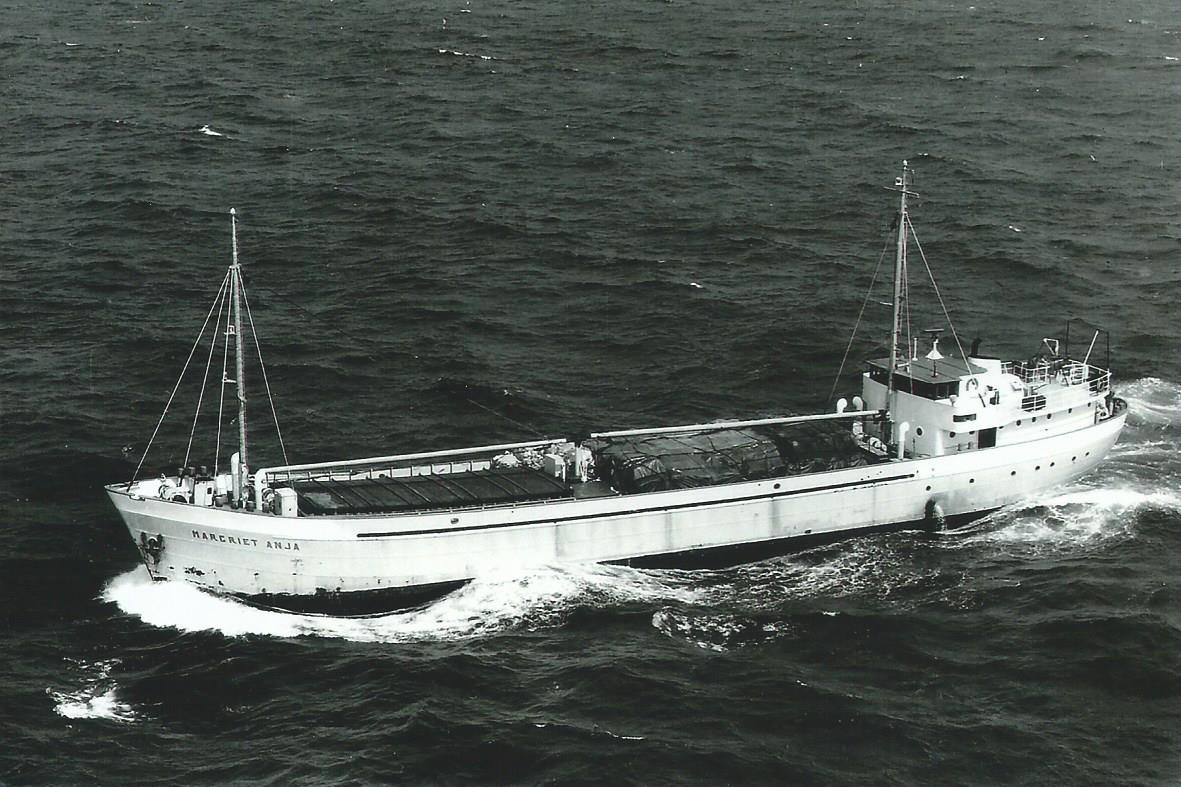
source: Nikolaos Sidiropoulos Archive
On July 10, 1959, while transporting malt from Horsens to Rotterdam, it ran aground in Alstern, but managed to detach without assistance. On March 1, 1960, while anchored in the Thames, a German-flagged cargo ship called the DIANA collided into it, causing minor damage to one of its masts as well as a hold cover. On November 25, 1961 en route from Partington to Sandefjord it collided with a railway bridge, causing damage to the mast and the cover of the hold.
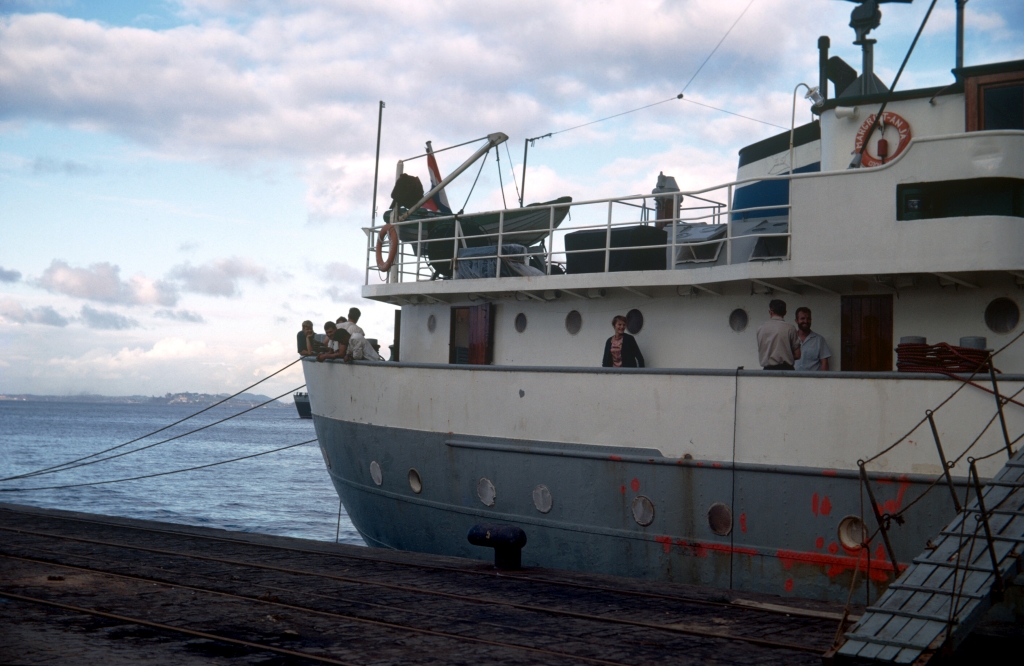
TheMARGRIET ANJA moored at the Nieuwe Waterweg near Rotterdam.
source: https://www.maritiemdigitaal.nl/index.cfm?event=search.getdetail&id=101088078
On September 25, 1962 its rudder scraped the rocky bottom, resulting in considerable damage. In 1969, it was bought byHarlingen-based SCHOOT. On its journey from Pasajes to Antwerp, carrying a 806 ton load of magnesite, its engine was damaged. It was towed by the Spanish tugboat SILVIA SEGUNDO to the port of Bilbao for repairs whixh took almost three months.
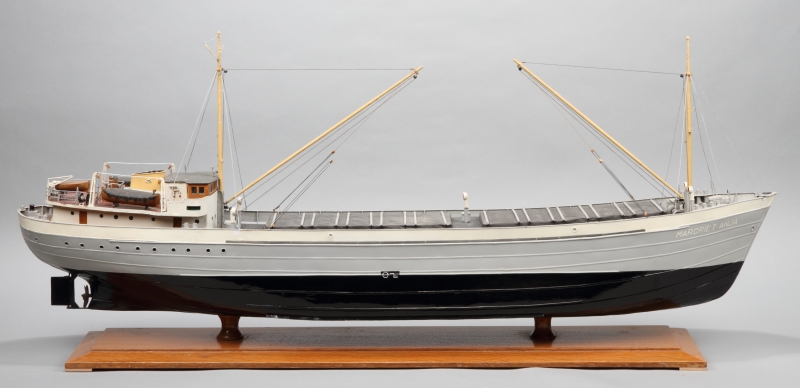
A model of the MARGRIETANJA.
Licensed by the FriesScheepvaart Museum
On November 1, 1972, on a route from Huelva to London with a load of 880 tonnes of ammonia phosphate, the engine camshaft was damaged and the ship had to stop in Lisbon for a week-long repair. . In June 1976, it was sold to Piraeus based Spyridon Alexandratos and renamed the APOLLONIA IV. In 1983, it was bought by Eleni Bastardi, based in Thessaloniki, and renamed the VERA. In 1986, it was purchased by Thessaloniki based Vassilis Papoutsoglou. In 1993, it was sold to the VERA Shipping Co. which will be the last in a long line of shipowners.

The stern of the VERA with its old name, MARGRIET ANJA painted out.
source: https://www.marhisdata.nl/schip?id=4006
The ship set sail for Thessaloniki on February 10, 1999 with 1,160 tons of rust from Larymna Fthiotida. At 19.25 the VERA was in the channel between Skiathos and the coast of Pelion, about 540 metres from the Lefteris Reef, when its rudder turned to starboard while in autopilot. Despite desperate attempts to disengage the autopilot system, the VERA ran aground on the Lefteris Reef. It started to take in water while the ship remained immovable. As darkness fell, it was decided to abandon ship. Captain and crew were rescued by the fishing vessel KOULA and transported to the nearby seaside village of Platanias on Pelion.
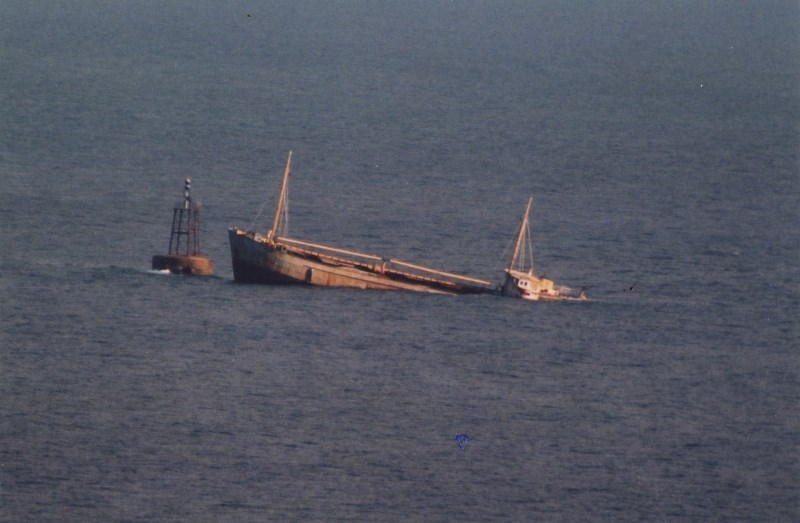
The VERA stranded on Lefteris Reef.
source: https://e-thessalia.gr/sipiada-akrotiri-ton-stenagmon/
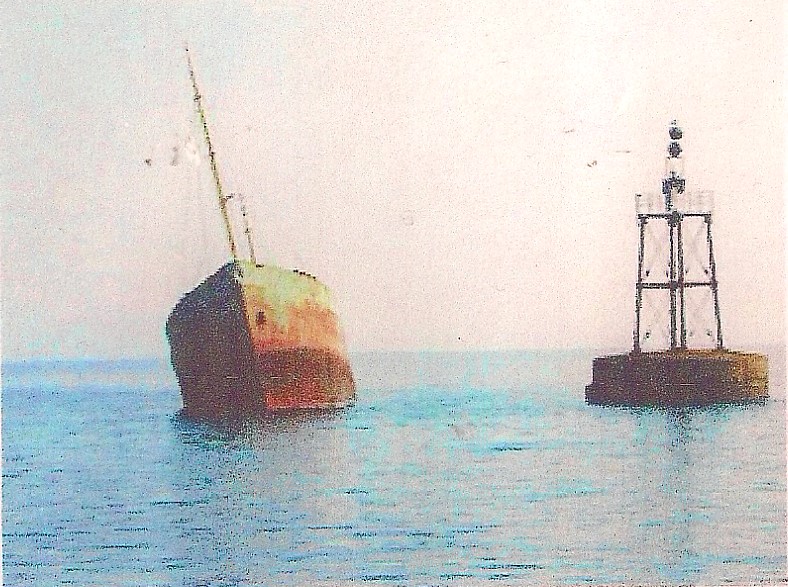
The VERA wreck next to the lighthouse (1999).
Research by Grigoris Kartapanis
The Wreck Today
The VERA remained on the Lefteris Reef for some time before being broken into two main parts by the elements.
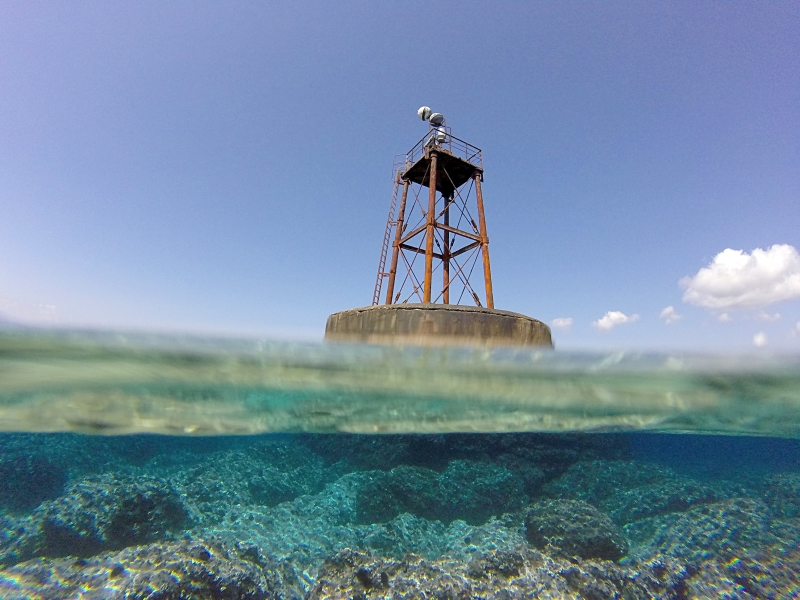
The Lefteris Reef lighthouse, as seen today.
Photo by Kimon Papadimitriou
The stern now lies resting on the seabed on its port side at a maximum depth of 15 metres. A few tens of metres deeper are the sides of the central part of the ship, which were the holds. At a maximum depth of about 27 meters, the bow also remains intact.
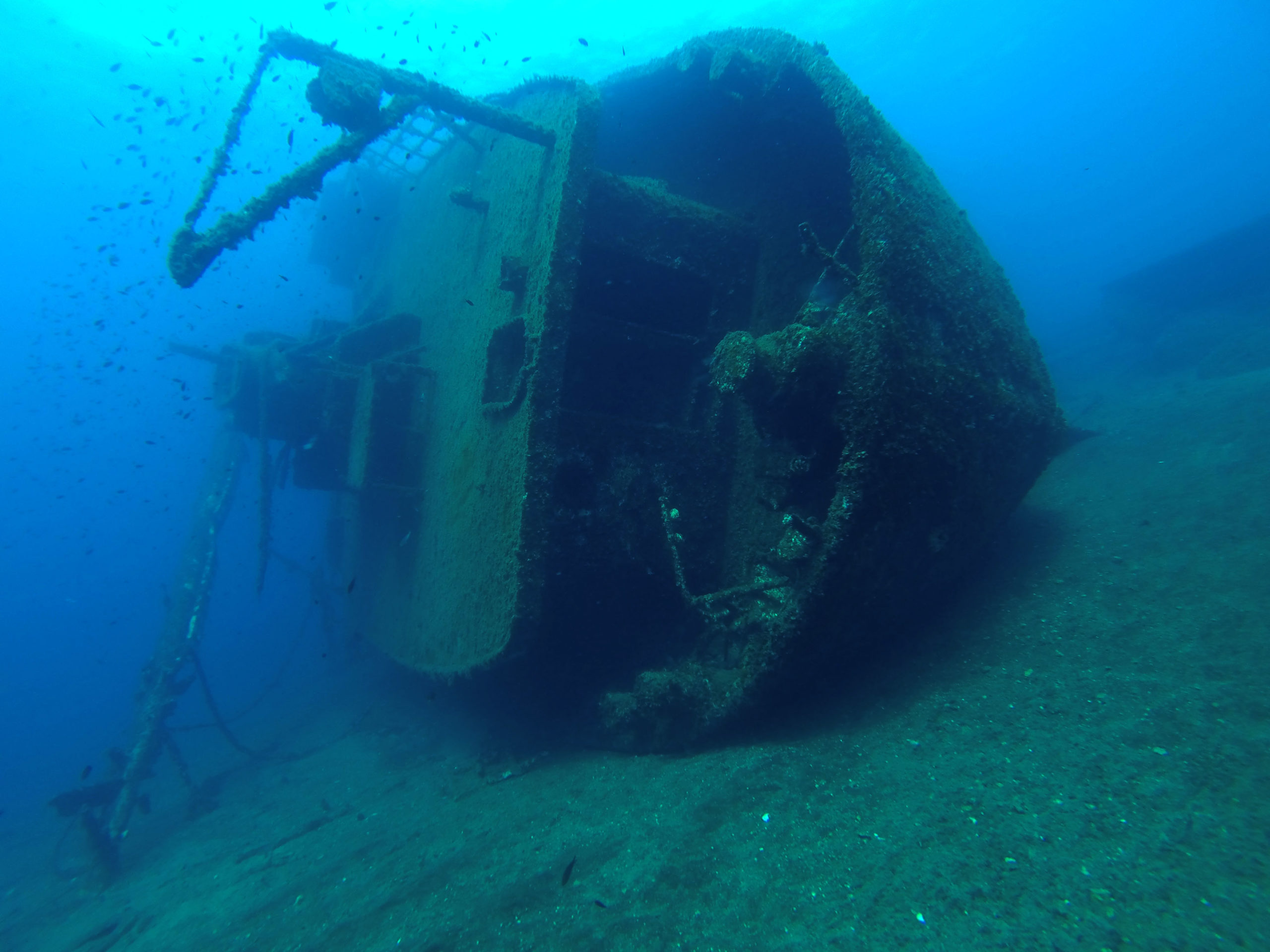
The stern of the VERA.
Photo by Anastasios Ktistis
The condition of these two pieces can be explained by the fact that they are the two most robust structural elements in this particular ship configuration, with the superstructure placed at the stern.
Photogrammetric image of the stern.
After diving in the stern of the wreck, the Underwater Survey Team (U.S.T.) created a three-dimensional model. This was made possible by taking hundreds of photos and compiling a myriad of reference points so that specialized software could render a 3D geo-referenced model to scale.
Some of the reference photos from the hundreds taken to create the model.
Photos by Anastasios Ktistis
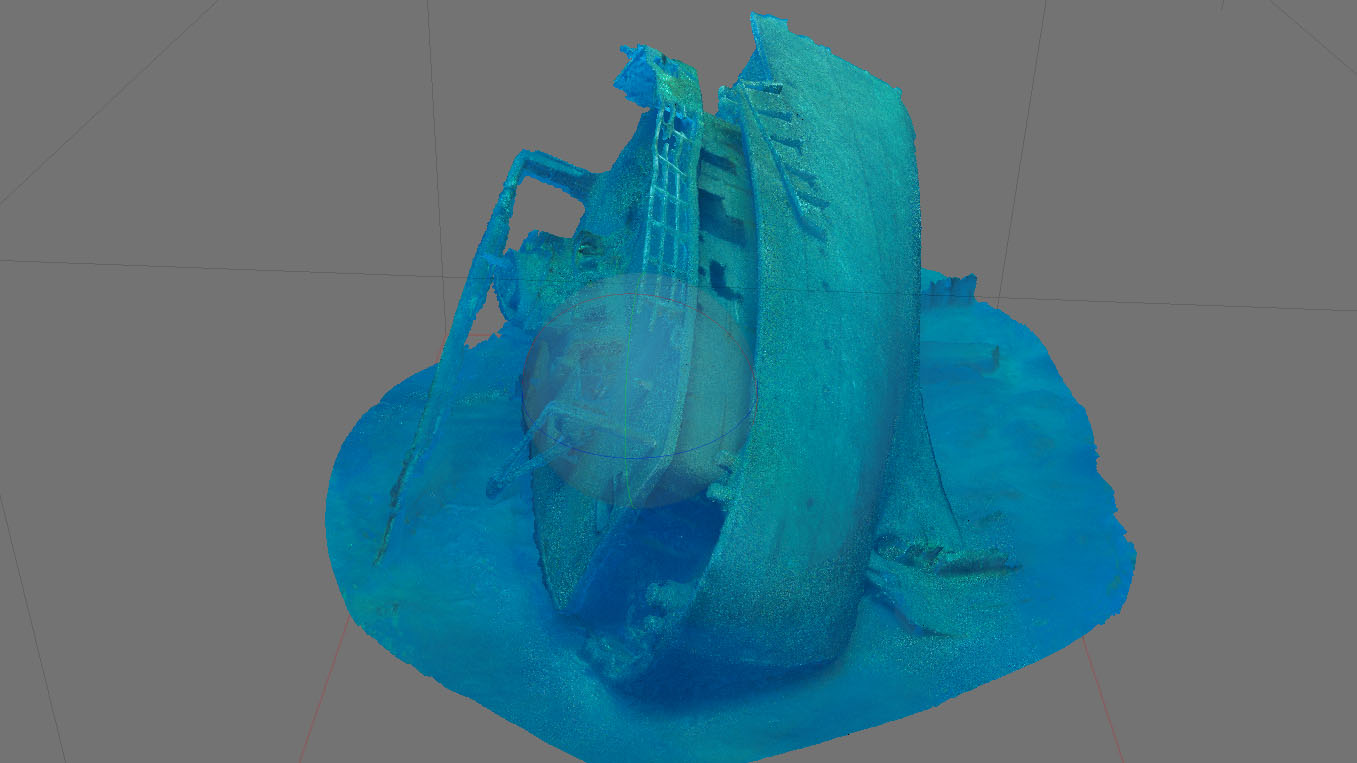
A snapshot of the 3D model created with Agisoft software.
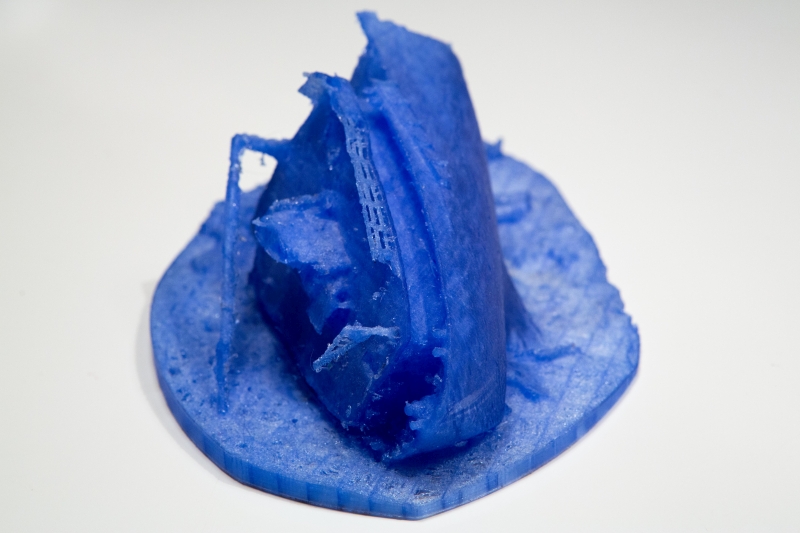
The 3D model printed by a 3D printer.
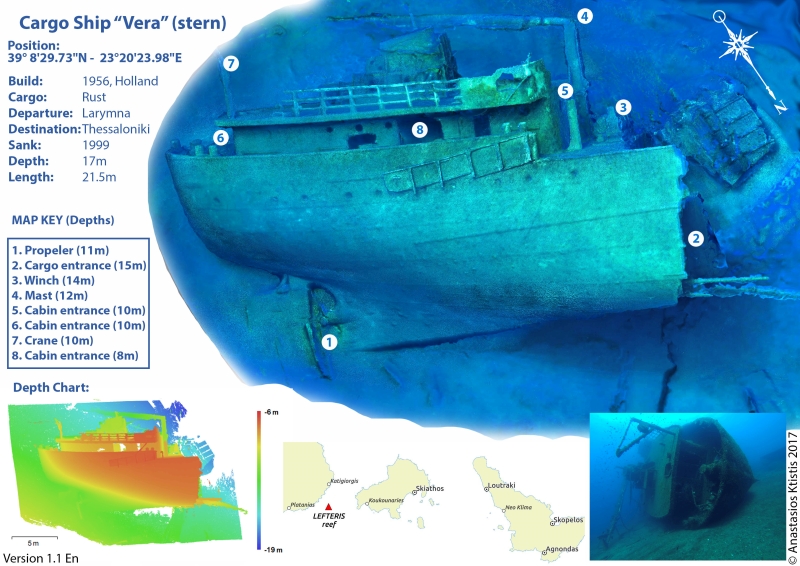
With all the collected data, it became possible to create an illustration showing information about the wreck for divers.
The author would like to thank Grigoris Kartapanis and RossRobertson for their help in writing the article.
Footnotes:
[1] Beacon (αλεώριον in Greek) from the Homeric word aleori, aleomai = I avoid. In naval terminology = buoy, or beacon, indicating naval hazards. It was a pillar attached to the seabed, which protruded above the sea surface. It was placed in areas of maritime hazards, such as shallow waters, canals, shipwrecks and was an aid to the seafarer to avoid such hazards.
Source: A. Dimaraki – C. Douni, Shipping, vol. A ‘, Ed. Eugenidou Foundation, Athens 1986, p. 189.
The pillars were usually made of white stone so that they could be seen at night.
Bibliography & Sources:
http://www.faroi.com/gr/pontikonisi_gr.htm
Naval History Periplous Magazine Issue 112
Navy Hellas Magazine article by Stylianos Lykoudis “The lighthouse of Xerxes” issue 268, February 1956
https://uslhs.org/lighthouse-lamps-through-time
Lefteris reef and its lighthouse – A special case in the Greek lighthouse network, Archive of Thessalian Studies, volume 21, Volos 2019, pp. 383 – 437 383 – 437
Stichting Maritiem-Historische Databan
